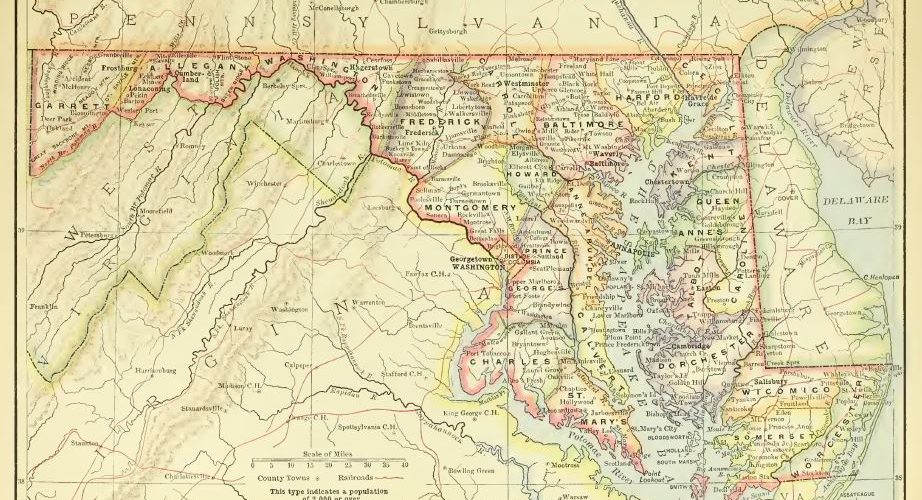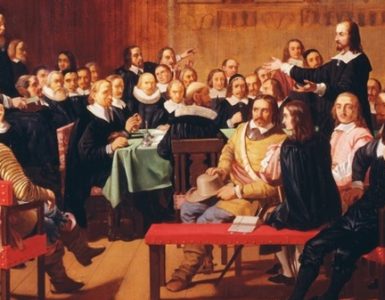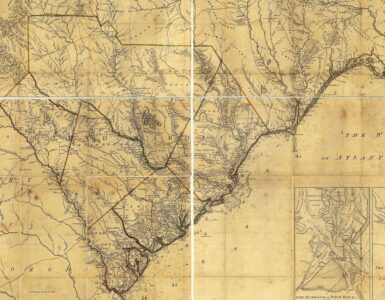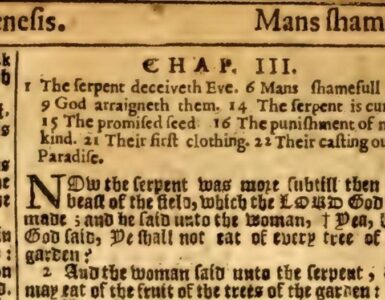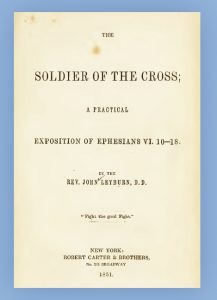 John was born in Lexington, Virginia, April 25, 1814, to John and Jane McDowell Leyburn. The infant’s paternal grandparents were George and Abigail Leyburn who were descended from English ancestors that had relocated to Ireland. He began his professional studies in Washington College in his hometown but completed his program in Princeton College with the class of 1833. Included among his classmates was Samuel Miller, Jr., who was the son of the Princeton Seminary professor. Leyburn began his divinity education in Union Theological Seminary in Virginia, 1833-1835, but then completed his work in Columbia Theological Seminary in South Carolina, 1835-1836.
John was born in Lexington, Virginia, April 25, 1814, to John and Jane McDowell Leyburn. The infant’s paternal grandparents were George and Abigail Leyburn who were descended from English ancestors that had relocated to Ireland. He began his professional studies in Washington College in his hometown but completed his program in Princeton College with the class of 1833. Included among his classmates was Samuel Miller, Jr., who was the son of the Princeton Seminary professor. Leyburn began his divinity education in Union Theological Seminary in Virginia, 1833-1835, but then completed his work in Columbia Theological Seminary in South Carolina, 1835-1836.
Licensed August 27, 1836 by Lexington Presbytery he supplied the Oak Grove Church in Amelia Courthouse, Virginia, 1836-1837. Leyburn then moved south to Alabama to be ordained and installed in the Gainesville Presbyterian Church on April 4, 1838. The congregation had been organized by presbytery the previous year. Either during or just before Leyburn’s ministry the church building was constructed and it still exists after 180 years.
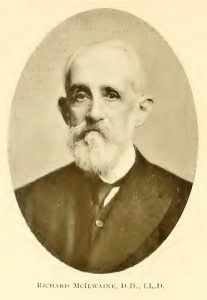 Leyburn returned to his home state of Virginia to accept a call from the Tabb Street Church in Petersburg in 1840. The church had been organized with twenty members through the ministry of Benjamin Holt Rice. Richard McIlwaine was a minister in Virginia in later years who had grown up in the Tabb Street Church during the Leyburn call. McIlwaine has provided his recollections of Leyburn in Memories of Three Score Years and Ten, 1908. He notes that the year after Leyburn began his call the church building burned because a fire from an outbuilding spread and consumed the sanctuary. As Pastor Leyburn, church members, and others, including Rev. W. H. Foote, stood gazing at the smoking and charred remains the following day, each one pledged to give funds for a new building. The new church was dedicated in 1844. McIlwaine remembered Leyburn “distinctly and with deep gratitude” and he attributed his coming to Christ to Leyburn’s sermons which “wrought serious conviction.” During his Tabb Street pastorate, John Leyburn made the acquaintance of Louisa Steuart Mercer of Fredericksburg and they were married in 1845.
Leyburn returned to his home state of Virginia to accept a call from the Tabb Street Church in Petersburg in 1840. The church had been organized with twenty members through the ministry of Benjamin Holt Rice. Richard McIlwaine was a minister in Virginia in later years who had grown up in the Tabb Street Church during the Leyburn call. McIlwaine has provided his recollections of Leyburn in Memories of Three Score Years and Ten, 1908. He notes that the year after Leyburn began his call the church building burned because a fire from an outbuilding spread and consumed the sanctuary. As Pastor Leyburn, church members, and others, including Rev. W. H. Foote, stood gazing at the smoking and charred remains the following day, each one pledged to give funds for a new building. The new church was dedicated in 1844. McIlwaine remembered Leyburn “distinctly and with deep gratitude” and he attributed his coming to Christ to Leyburn’s sermons which “wrought serious conviction.” During his Tabb Street pastorate, John Leyburn made the acquaintance of Louisa Steuart Mercer of Fredericksburg and they were married in 1845.
John Leyburn left Petersburg for Philadelphia in 1848 to become secretary of the Board of Publication for the General Assembly of the Presbyterian Church in the United States of America (PCUSA), Old School. Four years later he became a part owner and an editor of The Presbyterian which was the Old School newspaper. In 1860 he toured the Middle East and wrote accounts of his journeys for The Presbyterian. When visiting the Jordan River, Leyburn and his traveling colleagues decided to swim in its historic waters. Some bedouin seeing the opportunity to have a hearty laugh by making fools of the entourage of westerners stole their clothes leaving them all a bit embarassed. One Baltmore historian expressed the situation wryly.
There being no shops near at hand, where ready-made clothing could be procured, the situation was not the most agreeable.
When Leyburn returned home the Civil War had started and the Presbyterians residing in the Confederacy had separated from the PCUSA because they would not comply with the Gardiner Spring Resolutions, especially the requirement to affirm allegiance to the Federal Government. Despite raising the ire of his Philadelphia associates, John Leyburn returned to Virginia to minister in the Presbyterian Church in the Confederate States of America (PCCSA). He was the denomination’s secretary of the Committee of Sustenation and then starting in 1863 he became secretary of the Committee of Publication. He also had abundant opportunities for preaching as a pulpit supply in Richmond, and he could be an informal chaplain for the numerous prisoners, casualties, and troops in the city because of the war.
With the end of the war, Leyburn left Virginia and supplied the Associate Reformed Presbyterian Church in Baltimore for a few years until he was installed the pastor beginning in 1870. Despite the church name, it was at the time of his service an independent church and in some historical sources it is called Independent Presbyterian Church. Other sources call it Independent Church, which is not likely because a Unitarian group with that name was in Baltimore. An explanation is needed. The church had been organized as a member of the Associate Reformed Synod (Church) in 1797. In 1822, a portion of the Associate Reformed Synod left the denomination to form the Associate Reformed Presbyterian Church. It appears that for some reason the Baltimore congregation united with the Presbyterian Church in the United States of America in 1822, or possibly they were a congregation of the new Associate Reformed Presbyterian Church. Regardless of their denominational affiliation, it did not last long because the pastor at the time, John Mason Duncan, would not subscribe to the Westminster Standards, which meant that Duncan was likely facing disciplinary action for his views. So, Duncan and the Baltimore church pulled out of their denomination in 1825. During Leyburn’s ministry years the independent church was listed in Baltimore city directories under the category of “Presbyterian” as the “Associate Reformed Church” despite its lack of connectional association with any judicatory. Most likely the name was kept for some pragmatic or tradition-based purpose, but the reason for the continued use of their former denomination’s name is not clear. Regardless of the name of the church, Pastor Leyburn continued in a fruitful ministry until October 14, 1885 when he retired from active ministry and became pastor emeritus with a salary of 3,000.00 per year (NYT, 10-15-1885).
Rev. John Leyburn, D.D., died in the manse of the Presbyterian Church in Waynesboro, Virginia, July 13, 1893. He had been living with his niece, Jeanie Leyburn, who was married to the church’s pastor, Alonso Rice Cocke. Moses D. Hoge preached the funeral for his friend. Leyburn had delivered the sermon for Hoge’s installation in Second Presbyterian Church, Richmond, nearly fifty years earlier. Pastor Leyburn was buried in Green Mount Cemetery in Baltimore; Louisa had died in 1891. It appears that John and Louisa did not have any children. John’s brother, George William Leyburn, had been a missionary for the Presbyterian Church in the United States (PCUS), which was the name adopted by the PCCSA after the Civil War. George predeceased John dying on his field of service in Salonica, Turkey, in 1875.
Over the years Pastor Leyburn served the church in several capacities and received honors for his ministry. In 1850 he became the stated clerk of the Old School General Assembly and continued serving until the beginning of the Civil War. He was given the Doctor of Divinity by Hampden-Sydney College in 1849 and was a member of its board of trustees, 1844-1850. Leyburn was also a member of Princeton College’s board of trustees, 1875-1886.
His publications include—The Soldier of the Cross: A Practical Exposition of Ephesians 6:10-18, New York: Robert Carter & Brothers, 1851; “Obituary Notice for Joseph Addison Alexander, D.D.,” Proceedings of the American Philosophical Society, 7:63 (Jan.-June 1860), 320-325; “An Interview with General Robert E. Lee,” The Century Magazine, May 1885, 166-167; and Hints to Young Men from the Parable of the Prodigal Son, Philadelphia: Presbyterian Board of Publication, 1888, which is a collection of sermons he delivered to men during Sunday evening services in Baltimore.
Barry Waugh
Notes—For those thoroughly confused by the several similar names of the denominations in this article, the diagram inside the front cover of Seeking a Better Country: 300 Years of American Presbyterianism, by D. G. Hart and John R. Muether, P&R, 2007, is a good source for information. The portrait shown is Richard McIlwaine. The spelling of Louisa’s middle name is correct according to her grave marker inscription. Alonso Rice Cocke’s mother was Frances Rice, so there is possibly a connection to the Rice family of Virginia Presbyterianism. Salonica in the nineteenth century was in the Ottoman Empire, but currently it is known as Thessaloniki and is in Greece. Books—Marshall, The Presbyterian Church in Alabama, 1977; The Twentieth Century Biographical Dictionary of Notable Americans, ed. Rossiter Johnson, vol. 4, Ericsson—Gwin, Boston: The Biographical Society, 1904; History of Baltimore City and County, 1881; the incident at the Jordan River is from page 457 of History of Baltimore, Maryland, from its Founding as a Town to the Current Year, 1729-1898, by H. E. Shepherd, 1898. Several issue of Wood’s Baltimore City Directory on Internet Archive for the years of Leyburn’s ministry were consulted concerning the name of the church.


